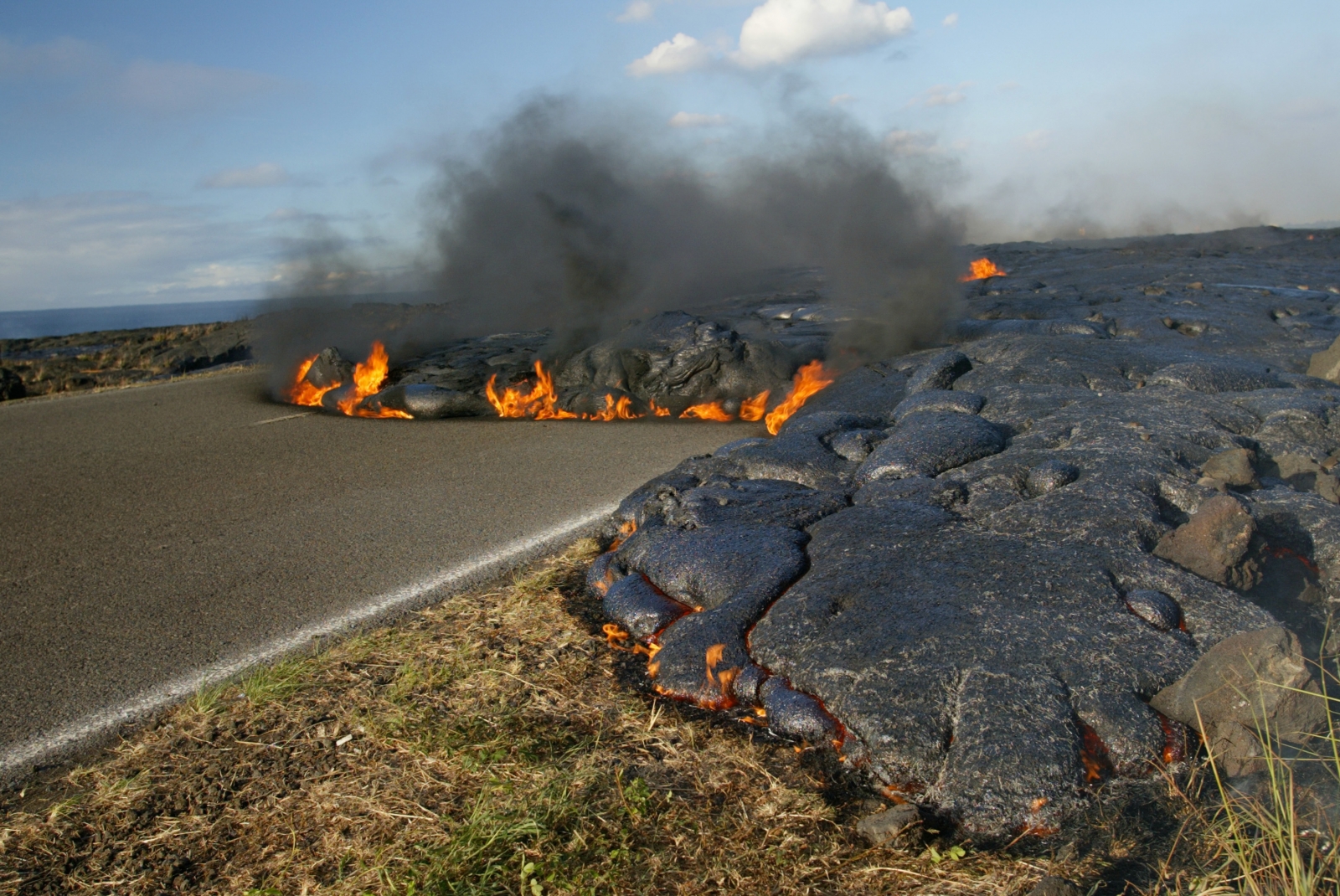

Mauna Kea and Mauna Loa make up most of the Big Island of Hawaii. Figure 4.13 shows another view of this volcano. The view above (Figure 6.3) shows Mauna Loa Volcano, Hawaii, seen from halfway up Mauna Kea, 40 kilometers away. But Kilauea is really a high point on the southern side of Mauna Loa and does not form a separate volcanic mountain. In the United States, besides Wrangell, only two Hawaiian volcanoes (Mauna Loa and Kilauea) are considered active shield volcanoes today. The others are composite volcanoes of the Aleutian Islands. Wrangell is exceptional – Alaska contains more than 40 active volcanoes but Wrangell is the only shield volcano. Since then minor amounts of ash have emanated from its summit. Small eruptions were reported in 1760, 1784, and 1884-85. Wrangell is the only active volcano in the Wrangell Volcanic Field. Wrangell, a shield volcano northeast of Anchorage in Alaska’s interior. In the United States, shield volcanoes are found in the western states, and in Alaska and Hawaii. These volcanoes are made exclusively from basaltic magma. Less commonly shield volcanoes are found at subduction zones. Others, such as Nyamuragira Volcano in the East African Rift Zone, are associated with continental rifts. Most are found on ocean islands above hot spots, including the hot spots beneath the Hawaiian Islands and the Galapagos Islands. We find shield volcanoes in many places and in several different settings. The name derives from the shape, which, supposedly, resembles a warrior’s shield lying concave on the ground. Shield volcanoes are the largest kind of volcano. 6.1 Comparing the sizes of stratovolcanoes and shield volcanoes 6.2 Shield Volcanoes Smaller features, including domes, maars, craters, and cinder cones are typically 100-1,000 m across, but some cinder cones have diameters less than 100 m. But, some, like the Yellowstone Caldera are huge and up to 100 kilometers across. Caldera, such as the caldera at the top of Kilauea Volcano can be small, only 1 to a few kilometers across. In contrast, most composite volcanoes have diameters of 15-30 kilometers. As shown in Figure 6.1, shield volcanoes are much larger than stratovolcanoes, but they vary in size with most having a diameter of 100s of kilometers. All these different landforms cover a spectrum of sizes. Yet, although they are types of volcanic landforms, they do not create volcanic mountains like shield and composite volcanoes do. Geologists sometimes list caldera, lava domes, maars, craters, and cinder cones as additional kinds of volcanoes. Volcanic mountains may be shield volcanoes or stratovolcanoes (also called composite volcanoes). Caldera and craters of any size may fill with water to produce crater lakes.Caldera form as a result of magma withdrawal and subsequent ground collapse.Multiple basaltic flows in the same area can produce large lava fields, sometimes called lava plains, sometimes creating lava plateaus that contain flood basalts.Some lavas of intermediate viscosity magmas have characteristics of both domes and flows and form coulees.Eruption of silicic and intermediate magmas, the magmas that create stratovolcanoes, often produces lava domes.Stratovolcanoes are found at subduction zones associated with continental margins.Stratovolcanoes form during multiple eruptions and are made of combinations of lava flows and pyroclastic debris of variable composition.Most shield volcanoes have craters at their summits and sometimes on their flanks.Shield volcano eruptions commonly occur at a central vent, but flank eruptions and fissure eruptions are common on the slopes or even near the base of a volcano.

Most shield volcanoes are found on ocean islands above hot spots or on continents at continental rifts.Although they are types of volcanic landforms, they do not create volcanic mountains like shield and composite volcanoes do. Geologists sometimes list caldera, lava domes, maars, craters, and cinder cones as additional kinds of volcanoes.In contrast most composite volcanoes have diameters of 15-30 km. They vary in size with most having a diameter of 100s of km. Shield volcanoes are much larger than stratovolcanoes.Volcanic mountains may be shield volcanoes or stratovolcanoes.


 0 kommentar(er)
0 kommentar(er)
